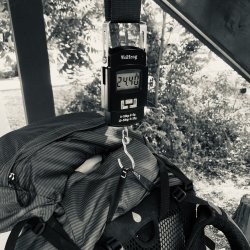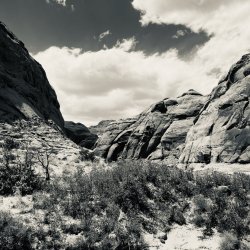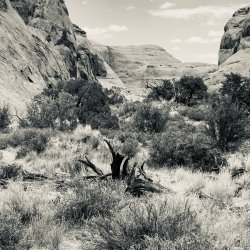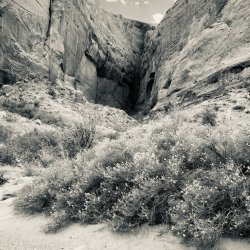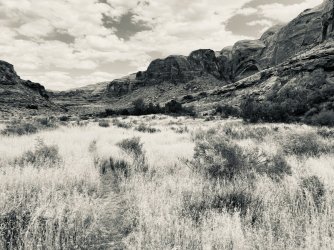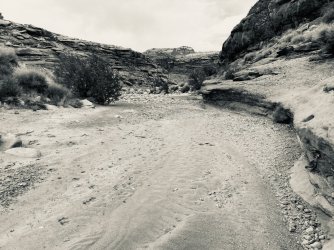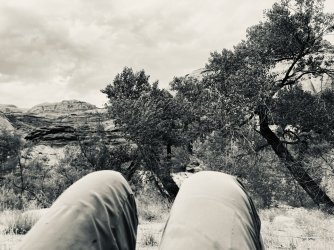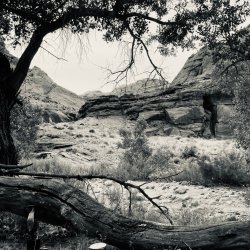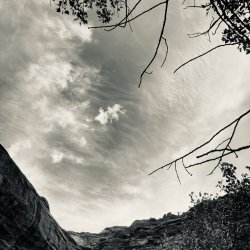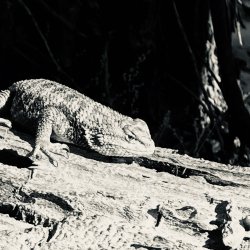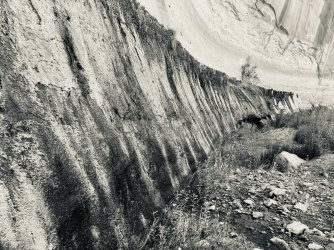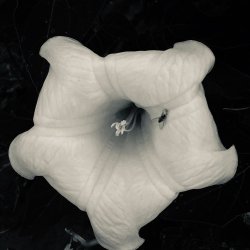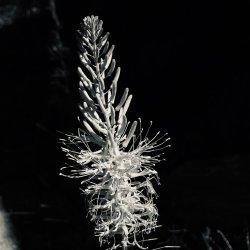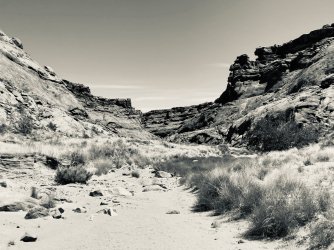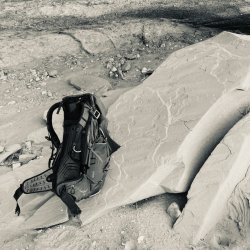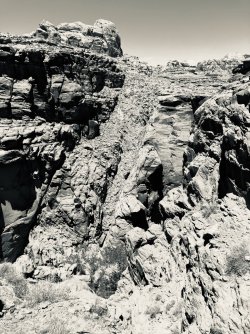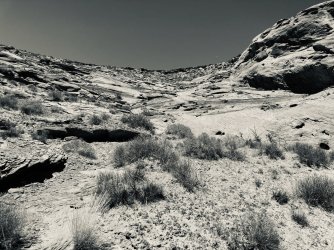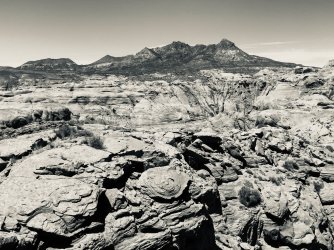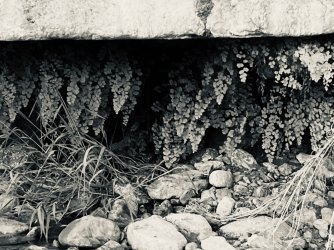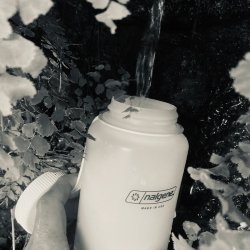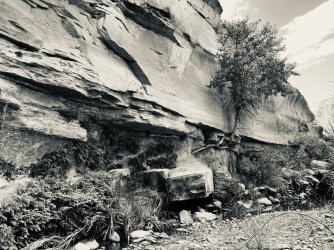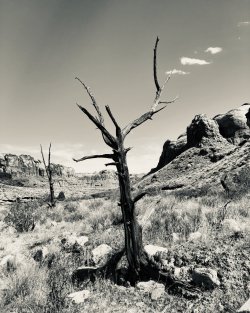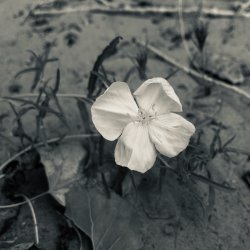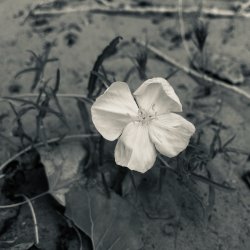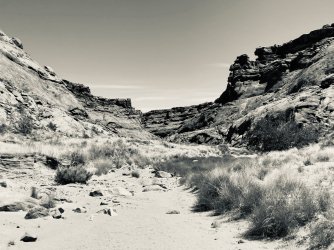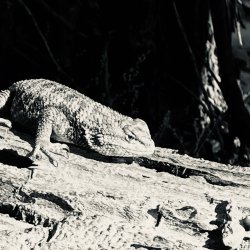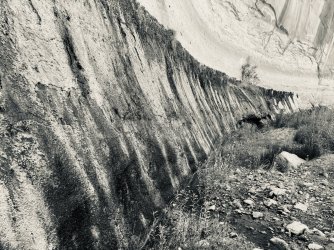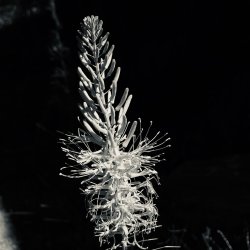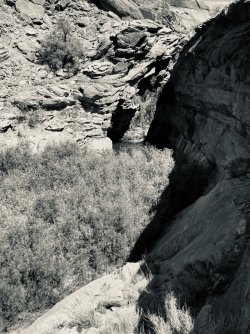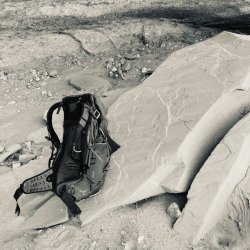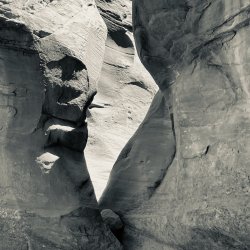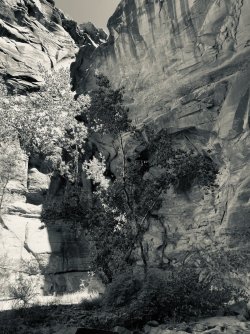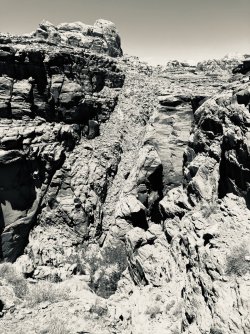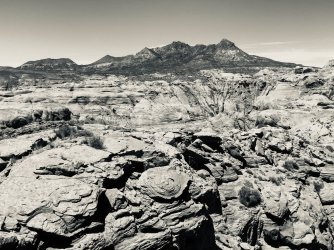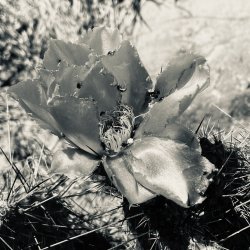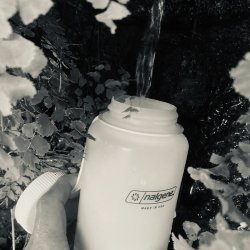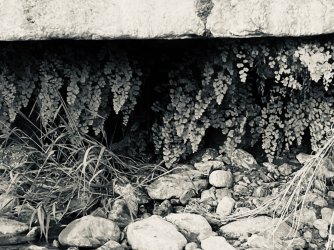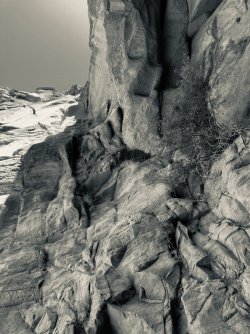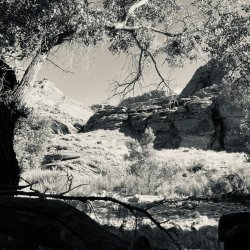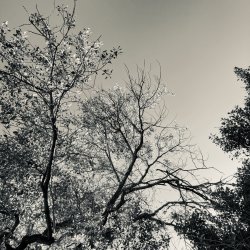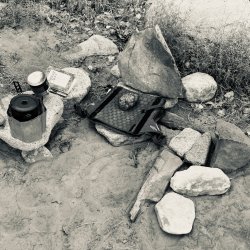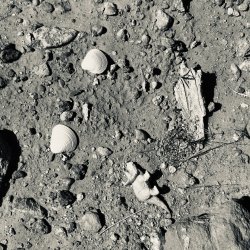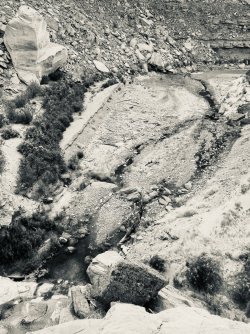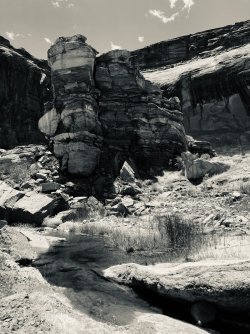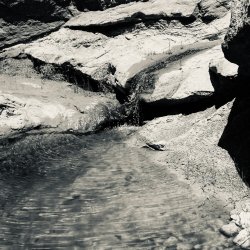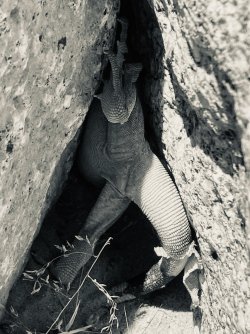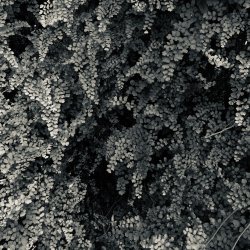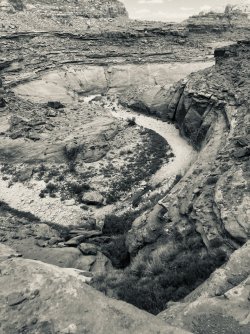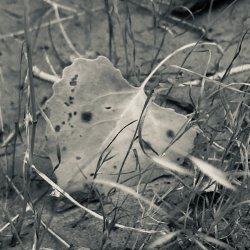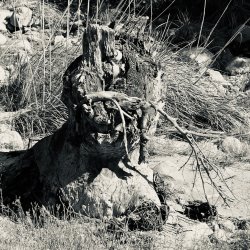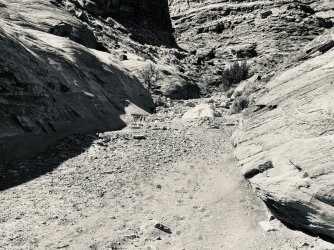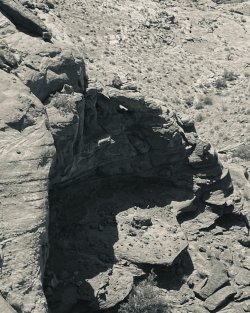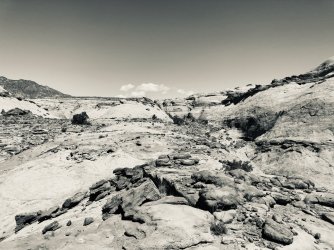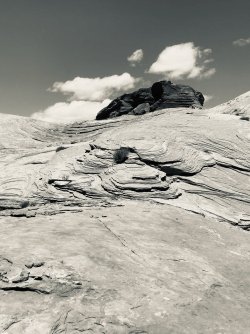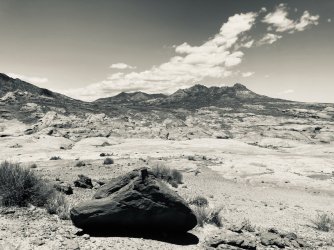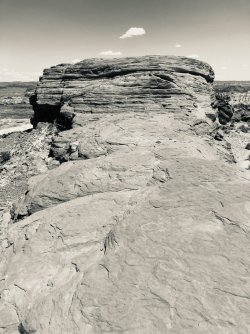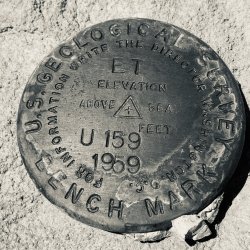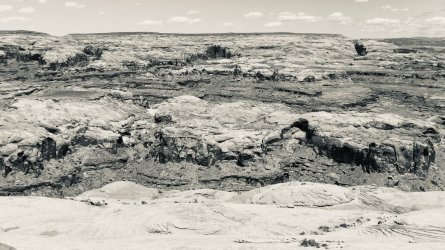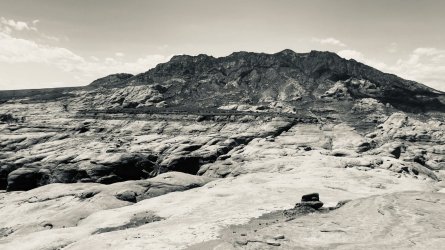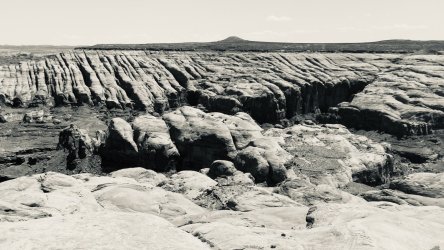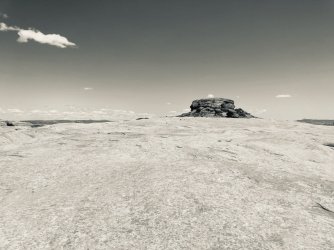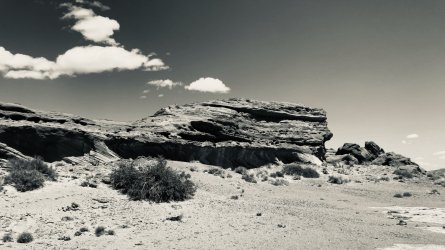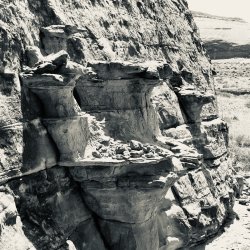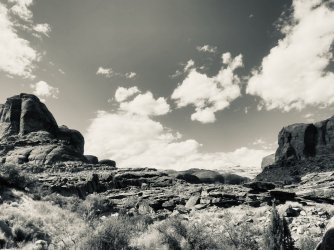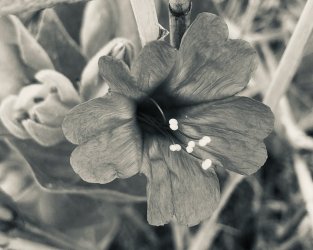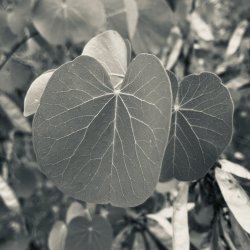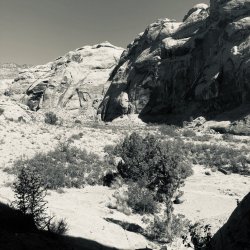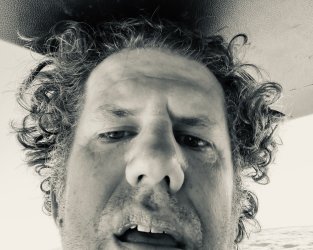- Joined
- Oct 6, 2021
- Messages
- 29
Hi folks, this report is for my solo trip to Ticaboo Creek via the South Fork trailhead, May 23–27, 2024. It was indeed a bit late in the season, but I got lucky and temperatures were reasonable; highs in the upper 80s. A week later the forecast highs were well over 100.
Photography this time was my phone, because it was easy. I already had the phone on for maps (CalTopo), also a first. I think it turned out okay and I plan to lean in on this for the time being because it’s just so much easier than a separate camera.
It was a five-day trip and I’ll do each day in a separate post in this thread.
However, I’ll start with something that I want to be location-vague about. I came across a large mudstone (?) inclusion in one of the sandstones, which in itself was very cool, but while crossing the area, I looked down and at my feet was something that sure as hell looked like the cast of a dinosaur track! The rock was the right age, but I didn’t see other fossils anywhere in that layer. It could 100% be just a coincidentally shaped rock.
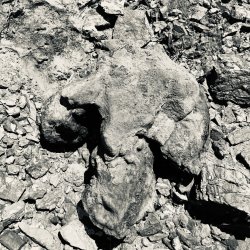
“Dino track” side A.

“Dino track” side B.
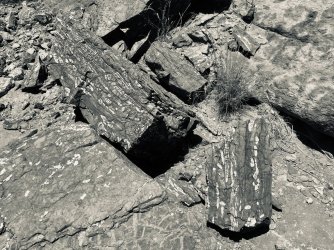
Some of the surrounding rocks.
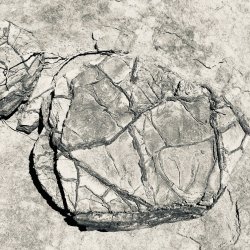
More surrounding rocks.
Photography this time was my phone, because it was easy. I already had the phone on for maps (CalTopo), also a first. I think it turned out okay and I plan to lean in on this for the time being because it’s just so much easier than a separate camera.
It was a five-day trip and I’ll do each day in a separate post in this thread.
However, I’ll start with something that I want to be location-vague about. I came across a large mudstone (?) inclusion in one of the sandstones, which in itself was very cool, but while crossing the area, I looked down and at my feet was something that sure as hell looked like the cast of a dinosaur track! The rock was the right age, but I didn’t see other fossils anywhere in that layer. It could 100% be just a coincidentally shaped rock.

“Dino track” side A.

“Dino track” side B.

Some of the surrounding rocks.

More surrounding rocks.

